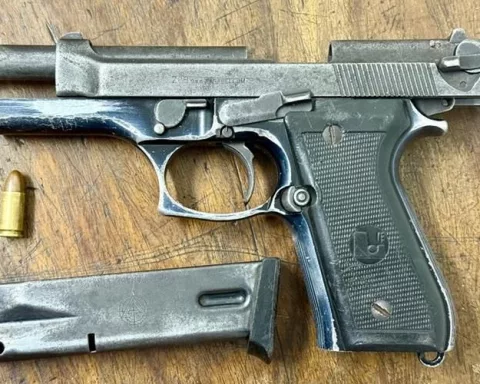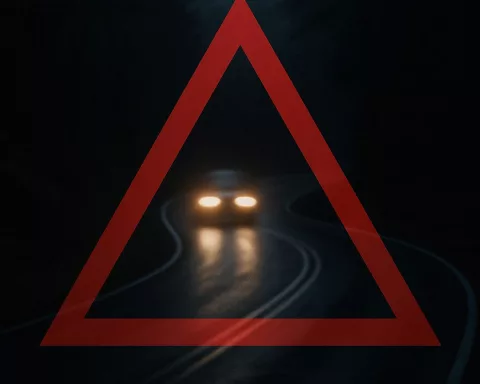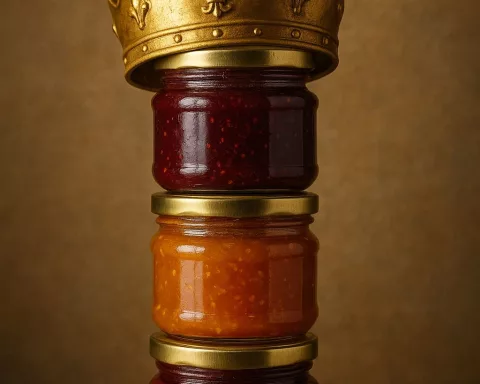South Africa’s police force, SAPS, is making strides in the elimination of illegal firearms and ammunition, having withdrawn over 263,000 firearms and parts from circulation in the past five years. SAPS’s National Commissioner, General Fannie Masemola, leads the charge, intensifying operations aimed at purging South Africa’s streets of illicit weaponry. SAPS meticulously handles the firearms before destruction, ensuring that they undergo thorough testing using the Integrated Ballistics Identification System (IBIS) to aid investigations and resolve ongoing cases. The elimination of these weapons from the streets is essential to ensuring public safety and security.
SAPS’s Strides In Illegal Firearms Destruction
South African Police Service (SAPS) is relentlessly identifying, seizing, and annihilating illegal firearms and ammunition within the country. In the past five years, they have successfully withdrawn 263,545 firearms and firearm parts from circulation. SAPS methodically handles these firearms before their destruction, and all firearms undergo thorough testing using the Integrated Ballistics Identification System (IBIS). SAPS’s unwavering mission is driven by the National Commissioner, General Fannie Masemola, who reaffirms SAPS’s commitment to intensify operations aimed at purging South Africa’s streets of illegal firearms and ammunition.
SAPS’s Strides In Illegal Firearms Destruction
South Africa’s journey to a safer environment is steadily progressing, thanks to the relentless efforts of the South African Police Service (SAPS). SAPS tirelessly identifies, seizes, and annihilates illegal firearms and ammunition within the country. The enormity of their mission is evident from the substantial quantity of harmful weaponry they have successfully withdrawn from circulation. In the past five years, a staggering 263,545 firearms and firearm parts are no longer a threat to the public.
As part of their ongoing mission, SAPS recently annihilated 14,595 firearms and firearm parts in Vanderbijlpark. The destroyed items included 11,421 handguns, 1,708 rifles, 1,205 shotguns, and 28 combination firearms. These lethal weapons were seized during operations like OPERATION SHANELA, voluntarily surrendered, or given up during amnesty periods.
SAPS’s Strategic Approach
SAPS’s massive firearm destruction isn’t an arbitrary incident, but the result of a well-executed, strategic plan. Earlier this year, in February, they destroyed 18,077 firearms and firearm parts. A detailed analysis of the firearms destroyed during this week shows a wide distribution across the provinces:
- Eastern Cape = 1,834
- Free State = 836
- Gauteng = 4,676
- Kwazulu-Natal = 1,600
- Limpopo = 989
- Mpumalanga = 664
- Northern Cape = 433
- North West = 446
- Western Cape = 3,117
The operation’s significance transcends mere numbers, reflecting the lives potentially saved. Firearms have often been the weapon of choice for horrific offenses such as murder, particularly when in unauthorized hands. Hence, the elimination of these weapons from the streets is vital for guaranteeing the safety and security of South African citizens.
Comprehensive Handling of Firearms
It is notable that SAPS methodically handles these firearms before their destruction. All firearms with operational mechanisms undergo thorough testing using the Integrated Ballistics Identification System (IBIS). This analysis aids in determining if the firearm has been involved in any illicit activities and assists in resolving ongoing investigations.
SAPS’s unyielding mission is driven by the National Commissioner, General Fannie Masemola. He reaffirms SAPS’s commitment to intensify operations aimed at purging South Africa’s streets of illegal firearms and ammunition. His words serve as a guarantee that SAPS will do everything possible to safeguard the public.
The Impact of SAPS’s Consistent Efforts
SAPS’s continual efforts in combating illicit firearms demonstrate their dedication to public safety. Taking decisive actions against illegal weapons is not merely a strategy; it is a necessity for establishing a safer South Africa. With each firearm destruction event, SAPS is dismantling the grim network of illegal weaponry, paving the way for safety, security, and peace.
The SAPS’s steadfast commitment to public safety is undeniably making a difference. With each step, they are not only eliminating threats but also painting a picture of a safer, more secure South Africa. Their tenacious pursuit of this mission is a testament to their commitment to the safety and security of South Africa’s citizens.
1. What is SAPS’s goal in relation to illegal firearms?
SAPS’s goal is to eliminate illegal firearms and ammunition from circulation in South Africa.
2. How many firearms and parts have been withdrawn from circulation in the past five years?
In the past five years, SAPS has successfully withdrawn 263,545 firearms and firearm parts from circulation.
3. How does SAPS handle the firearms before destruction?
SAPS methodically handles the firearms before their destruction, and all firearms undergo thorough testing using the Integrated Ballistics Identification System (IBIS).
4. Who leads SAPS’s mission to eradicate illegal firearms?
SAPS’s National Commissioner, General Fannie Masemola, leads the charge in intensifying operations aimed at purging South Africa’s streets of illicit weaponry.
5. Why is the elimination of illegal firearms from the streets important?
The elimination of illegal firearms from the streets is important to ensure public safety and security, as firearms have often been the weapon of choice for horrific offenses such as murder, particularly when in unauthorized hands.
6. What is the impact of SAPS’s consistent efforts in relation to illegal firearms?
SAPS’s consistent efforts in combatting illicit firearms demonstrate their dedication to public safety and are making a difference in establishing a safer South Africa. With each firearm destruction event, SAPS is dismantling the network of illegal weaponry and paving the way for safety, security, and peace.












